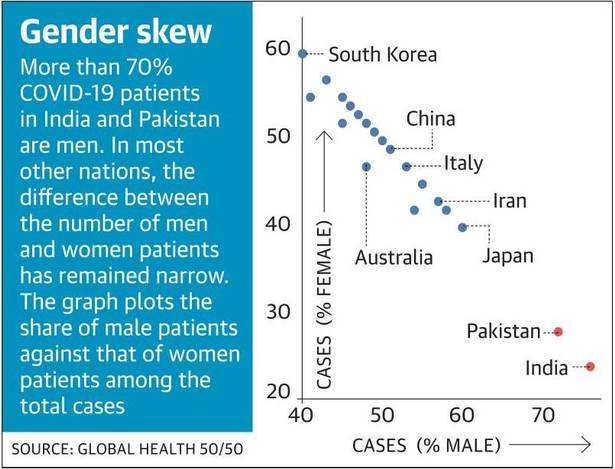Why in news?
- In a striking contrast with many countries, men in India more than women appear disproportionately likely to test positive for COVID- 19, an analysis of global data shows.
- This anomaly, experts told could be a statistical reflection of relatively low testing for the disease in India.
- Last week, the Health Ministry said 76% of the confirmed cases in India were men.
Details

Many countries — including the United Kingdom and the United States — while publicising data on cases and death rates don’t have sex-segregated national data.
However, data from 40 countries, which do share such data and compiled by GlobalHealth5050, an independent research initiative that tracks gender and health, suggest that the gender-split in all countries is roughly 50-50, barring two exceptions: India and Pakistan.
Another unusual exception was South Korea — the country that has conducted the maximum number of tests as a proportion of population — in that more women tested positive than men.
However, men in all countries were significantly more likely — almost twice — to die than women, though this data point is available for only 18 countries.
India hasn’t yet shared national figures on COVID-19 mortality rates in men and women.
Reasons for this skewed proportion
- Experts told that India’s wide disparity was more likely due to sociological factors.
- When testing increased and more infections detected the male-female gap would likely narrow.
- It’s possibly more reflective of employment trends in India. Women are much less likely to be travelling for work internationally from India.





